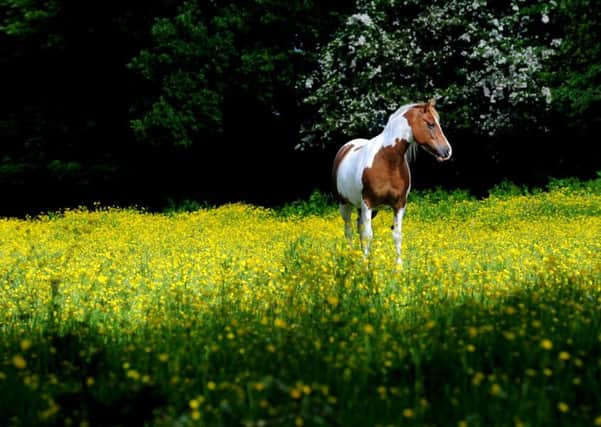Buttercups belie quiet scene with stunning science


The attractive village, just off the main A169 road from Pickering to Whitby, dates back hundreds of years and remains a rural idyll in the Yorkshire countryside.
This picture, taken on the outskirts of the village by one of The Yorkshire Post’s award-winning photographers Simon Hulme, is all the more striking for the bright buttercups in the summer sunshine.
Advertisement
Hide AdAdvertisement
Hide AdWhile the flowers are famously associated in folklore with a test supposedly able to tell whether someone likes butter or not by holding one under their chin, in actual fact the reason they shine with an intense yellow colour is more a matter of canny natural advertising.
The bright colour of the flowers stands out to insect pollinators at a great distance, helping to ensure they survive and flourish.
The best time of year to see them at their sparkling best is the summer months, when the sun is high in the sky.
According to Paul Simons, plant writer for The Guardian, buttercups get their bright colour from yellow pigments in the petals’ surface layer. Their shiny gloss comes about thanks to layers of air just beneath the surface which helps reflect the light like mirrors.
Advertisement
Hide AdAdvertisement
Hide Ad“The glowing phenomenon is unique in plants, although something similar happens with some butterfly and bird wings,” says Simons.
Buttercup flowers also track the sun, with their petals making a cup shape like a satellite dish on colder days as a way of warming up the flowers and making them more inviting to insects - something that has the further advantage of keeping them warmer.
While Yorkshire has been basking in a spell of hot weather in recent weeks, for buttercups the solar tracking process helps ensure survival in chillier weather, helping to boost their temperature by as much as 3C when required.
Technical information: Nikon D3S camera, exposure 1/500th sec at f5.6, ISO 200.